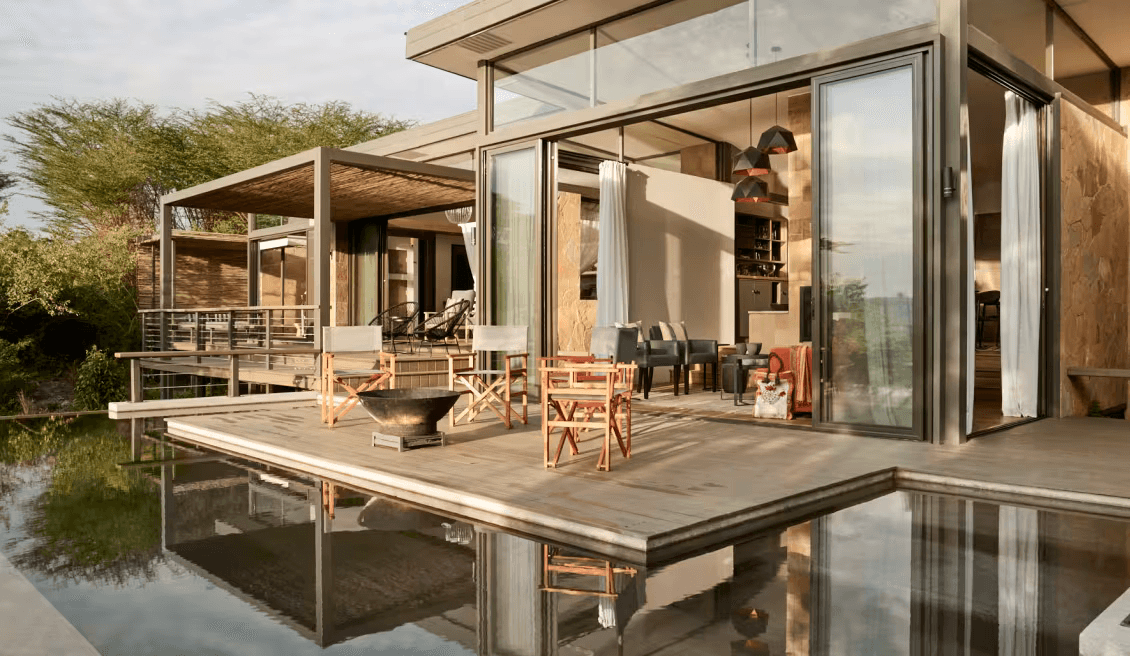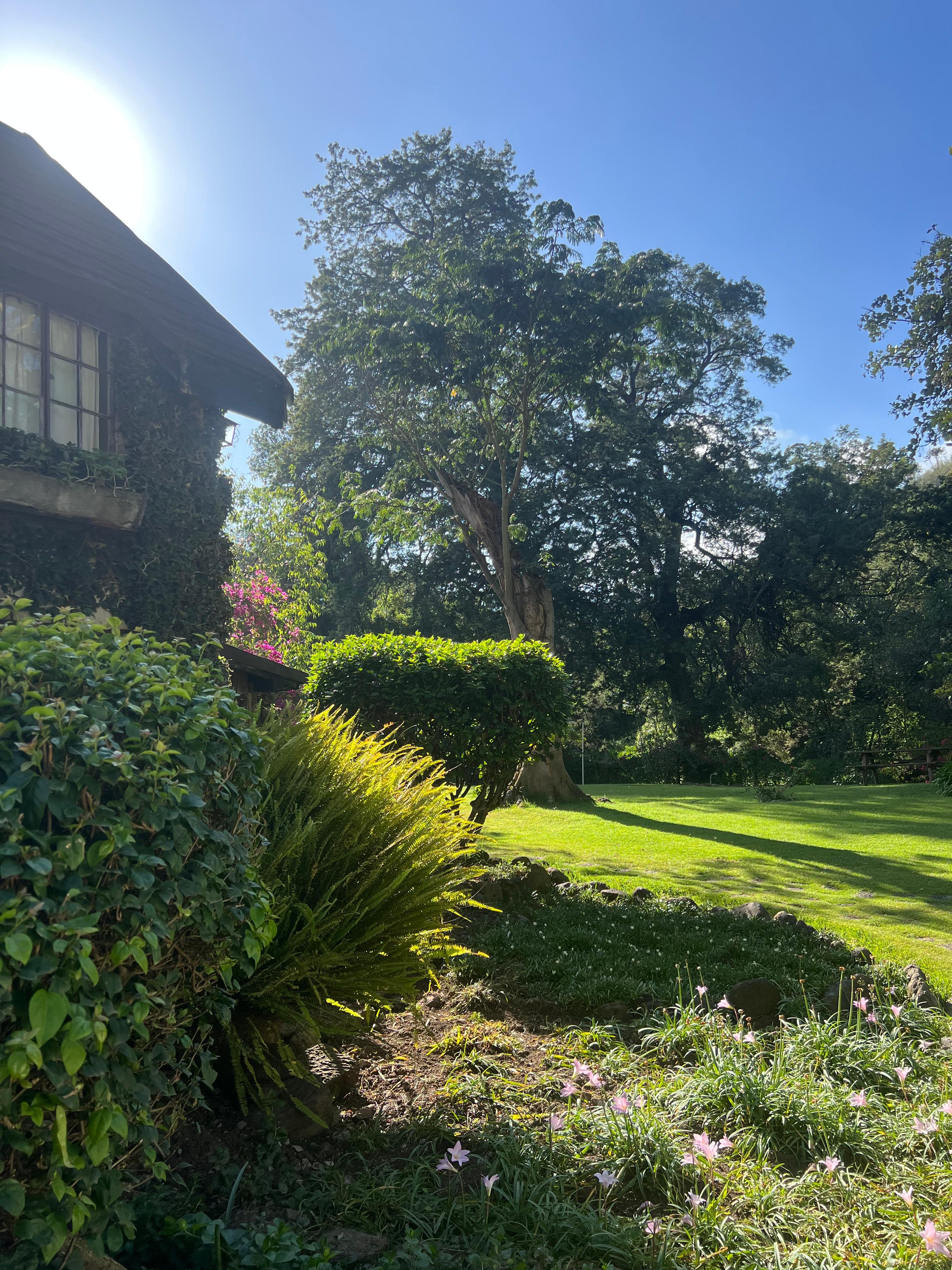INSPIRATION
Wild Wild Borana
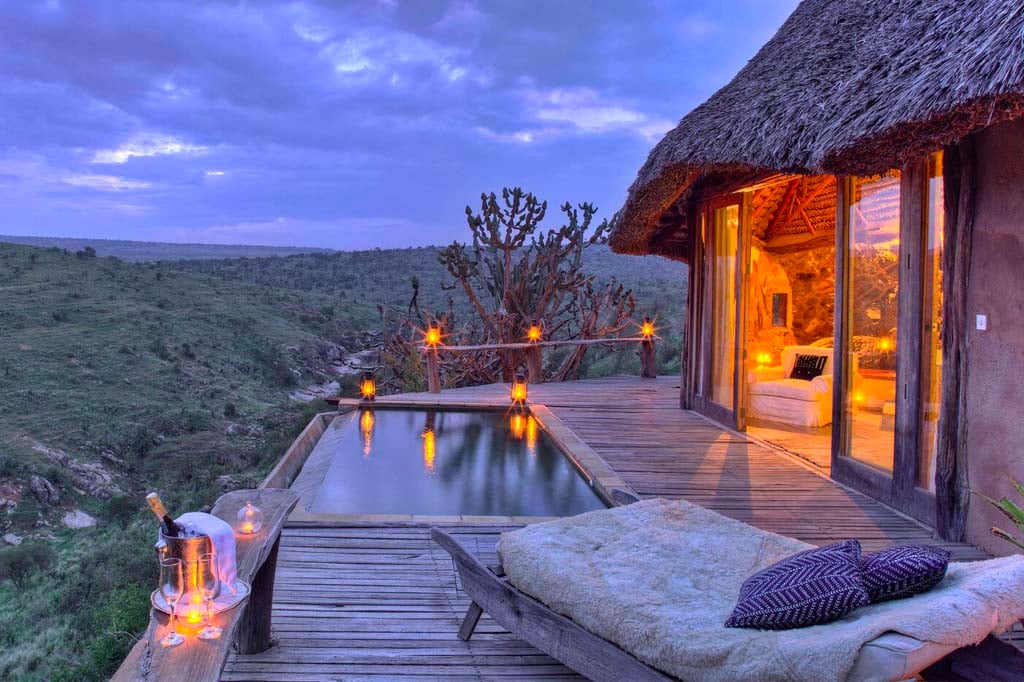
From horse riding with giraffes to rhino tracking on foot, game drives, bush walks and more, Borana Conservancy offers a range of unique ways to encounter wildlife. Itching for adventure, Wendy Watta tries it all.
Pride Rock
Standing on top of Pride Rock looking down at the endless carpet of green, I am under the brief happy delusion that I am queen. This rock is the actual inspiration for The Lion King movies, and I still vividly recall that scene where Rafiki holds up a baby Simba into the air like a prized trophy as the animals gather below this lofty vantage point. “Naaaaants ingonyama bagithi baba!” starts the popular Circle of Life song. No, really, we’re playing it on someone’s phone, the sound drowning out in the brisk wind.
During the research stages of the The Lion King film (1994), the Disney animation team visited Borana for a safari. For the 2019 remake, they stayed at Borana Lodge for 10 days and scenery from the conservancy can be seen in the background. Today though, it’s popular for sundowners and proposals, and can be booked for you by whichever of the lodges you’re staying at. I sit down next to a lizard as Nissa from Lengishu House passes around a tin of crackers. It darts behind a stone. Nissa unzips the bag with drinks and asks if I’d perhaps fancy some wine. Ah, I do so love an open minibar in the bush…
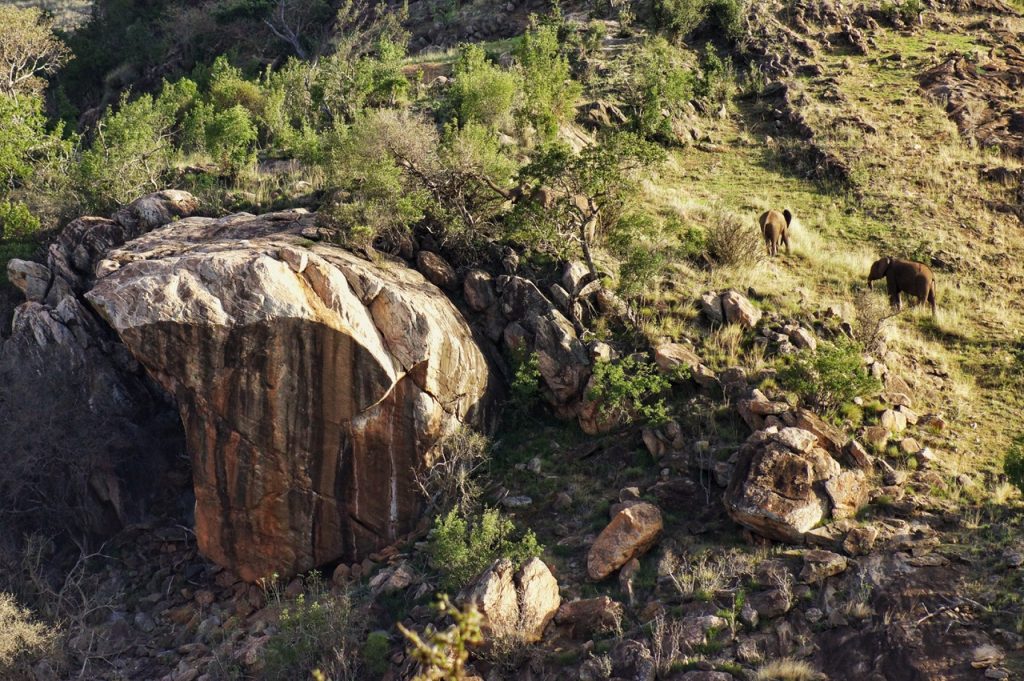
Riding Wild
I am paired with Joker, a 26 year old well-groomed dark thoroughbred stallion. He is a former polo horse and seems to be patient and well-tempered. There are actually two sets of stables at Borana, and the other has 20 horses and caters to more experienced riders. At both, there is a rider weight limit of 95kg. I hop on the comfortable English Wintec saddle and with one guide leading the way and the other trailing behind, we set off just as the last beam of sunrise lingers over the horizon
As we ride, I like to imagine that I’m on my way to King’s Landing. My Game of Thrones dreams are playing out in real life, minus the gory bloodshed. I say something about being on ‘neigh-cation’, and the team threatens to never speak to me again. We are accompanied by three dogs who run ahead on the trail to remove birds which can spook the horses, but mostly, it seems like they’ve come along for the sheer fun of jumping into puddles and chasing dik diks through the grass.
Most of the time, the horses walk, but intent on not being left behind, Joker sometimes breaks into a canter, and it is totally exhilarating. We get so close to reticulated giraffes that we’re practically eye to eye, and I can almost trace out the patterns on their skin. I wonder if they think I’m a centaur. I quite like the perspective of being part of the wild rather than just a spectator. When we come across zebras, they ride with us for a few seconds before breaking off. I feel like my safari experience has peaked. How will I ever be content with anything less?
We ride up and down the hills, over rocks and grass and across a stream, until my leg cramps up two hours later. By then, we’re already back at the stables.
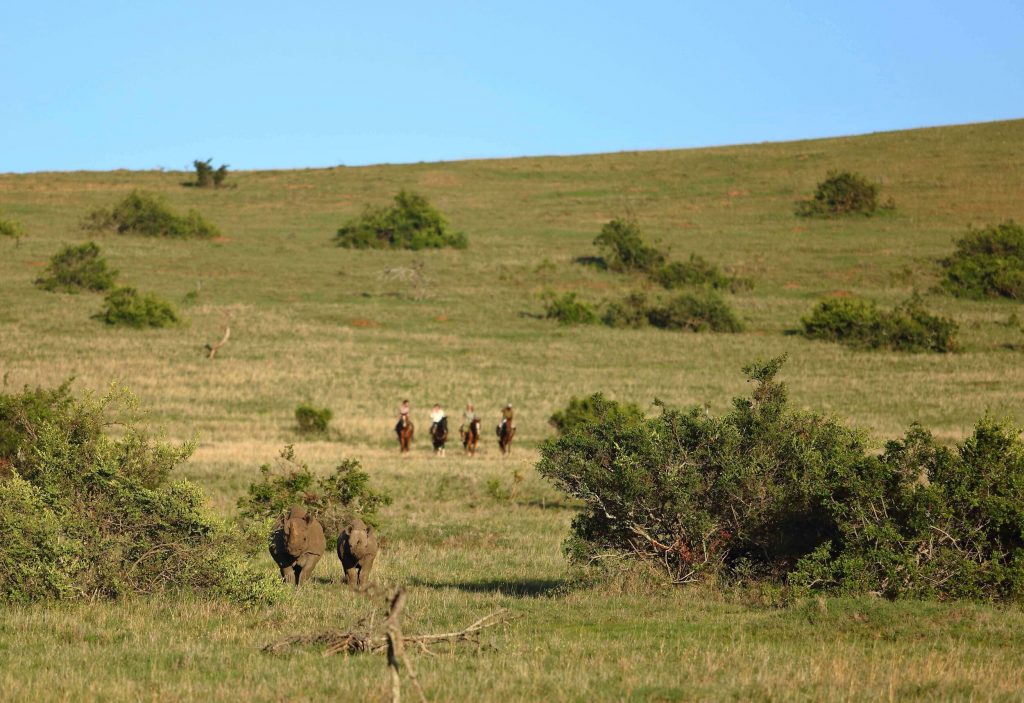
Rhino Tracking
I draw back the curtains to see a dreary, thick quilt of clouds drawn over the plains. Part of me wishes that it would rain so much harder, an entire avalanche of rain, if ever, that the rhino tracking planned for the morning is canceled. Besides, I’ve done it twice already. But, ten minutes later, I’m in the Land Cruiser with the Maasai comforter tightly wrapped around me, watching rain droplets hit the windshield. The car veers from side to side and the tyres slip over the mud, as our skilled driver tries to manoeuvre it to a dryer patch of road. A thick swad of mud lands squarely on my forearm. When I rub it, it blends in like the perfect shade of concealer.
“I think I’ll go either way, “ says Jan. “I’ve come too far not to go tracking!” Now why does he have to be so sensible? A decision is made…I guess I’ll go too, because I’m competitive and refuse to be left behind. Moments later we’re at the barracks where a few rangers who have been out in the field all night are huddled chatting over hot tea. Peterson, who’s assigned to our team, is way too chipper for someone who was on watch in the rain all night with nothing but a poncho, apparently. We also pick up two scouts then begin a light walk downhill, with nothing to see for miles but vast green fields rolling and undulating in all directions. I feel like I’m inside a painting.
As we walk, we learn a bit about the rhinos and the history of the conservancy. In 2013, 21 black rhinos were reintroduced into the area having disappeared over 50 years ago. The fence between Borana and the neighbouring Lewa conservancy was also taken out, resulting in a shared 94,000-acre sanctuary where rhinos can wander back and forth as they please. At 106 black and 98 white rhinos today, the population is certainly thriving. Given the sheer size of Borana, it is divided into eight zones for easy management by the scouts; we’re walking through zone one.
“This is the marking territory of a black rhino, which is a browser. You can tell because these sticks are snapped at 45 degrees,” says Peterson, pointing to what looks to me like nothing but a mound of dirt that was perhaps the scene of a huge fight of titan proportions. “ If it was a white rhino, you would mostly find grass,”
Next, we come to an isikuti martina berry bush where the scouts pluck a few and ask us to taste. This is what they snack on while in the fields. Thereafter, they follow honeyguide birds to another bush where we find a large honeycomb. This is thrilling, like being on an episode of Running Wild with Bear Grylls.
Two hours later, trudging up yet another hill with sneakers made all the heavier by the sticky black cotton mud, I am panting a few paces behind Peterson who’s barely broken a sweat. We haven’t spotted a rhino yet. These guys could go on for hours, but like sprinters passed out at the finish line, I physically can’t go any further. If anything, I idly wonder if their job description includes carrying completely wiped out guests back to the Land Cruiser.
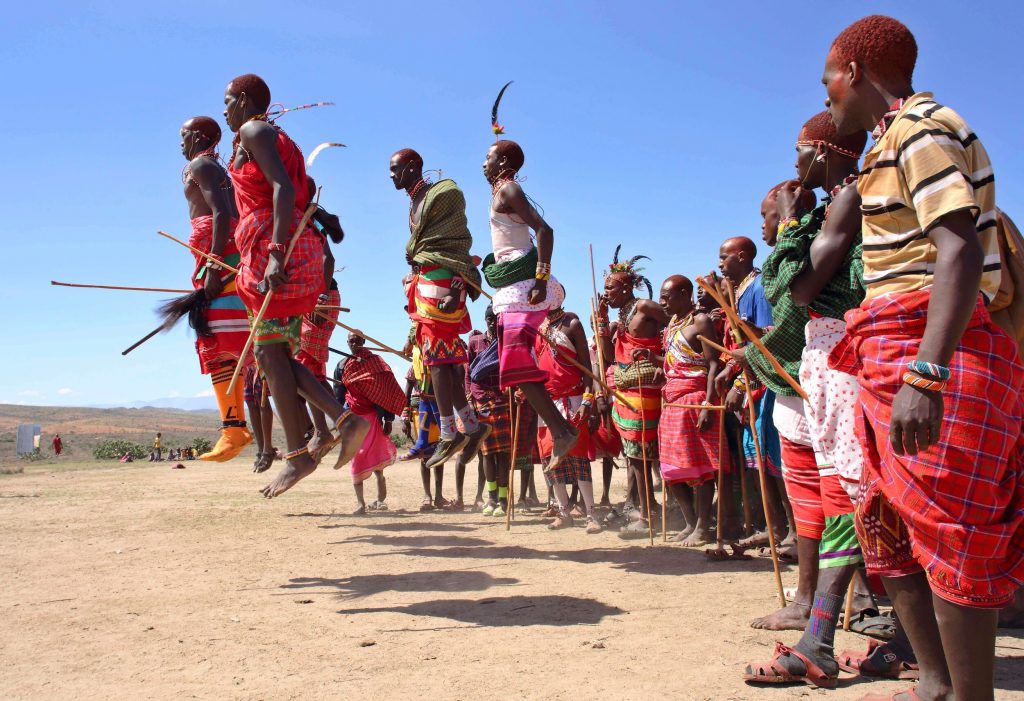
The conservancy
Borana is a whopping 32,000 acres. If I owned that much land, I would start my own kingdom and be the ‘Queen in the North’. When we meet up with Michael Dyer – whose family owns the property – for sundowners on a sun-bleached hill, he seems far more laid back than one would think. We sit on camp chairs looking out onto the conservancy; the land sprawls on and on, as though infinite. Living in Nairobi where a new apartment always seems to be springing up, this place looks so empty…like maybe this is what the entire earth will look like after the rapture.
Our game drives are very eventful. We watch as a lion stalks through the dewy grass. It doesn’t even seem to be hiding, but rather, steering a herd of zebras closer to the rest of the pride. Fortunately, if you’re on the zebra’s side, the lion’s strategy fails. Later in the evening, we see 17 lions and follow them for a while. There are no other vehicles in sight. They race and playfight, and the younger cubs deceptively look like cuddly little cats that you would want to pet. Borana had a successful lion breeding program in 2017, and if our trip is anything to go by, you’re almost guaranteed to spot them here.
A kori bustard, the heaviest African bird of flight, looks at us indifferently. For such a tiny bird, the isabelline wheatear has such a hefty name. The colourful lilac breasted roller is always a joy to see. We come across another pride of lions, this time eight. When the guinea fowl start to cackle, the lions move on. Apparently, if you’re walking in the bush and hear a guinea fowl making a lot of noise, it indicates the presence of leopards or lions. Since there’s a government road passing through Borana on the way to Mukogodo Forest, and some passengers pass by on foot or motorbikes, I wonder if they actually know about the guinea fowls.
There are five different kinds of accommodation at Borana Conservancy, and each pays US$100,000 a year for conservation. It has been accredited as a centre of excellence in sustainability by the Long Run, one of the world’s largest sustainable development initiatives setting standards for nature-based tourism. Members collectively conserve over 21-million acres of biodiversity and touch the lives of over 750,000 people
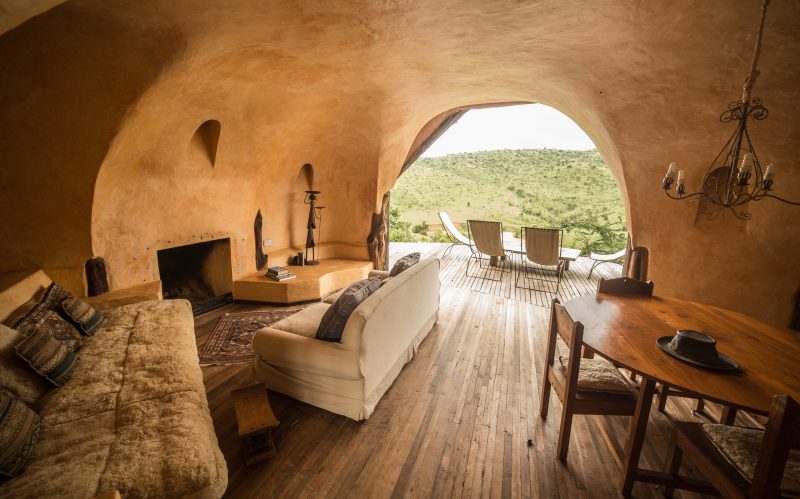
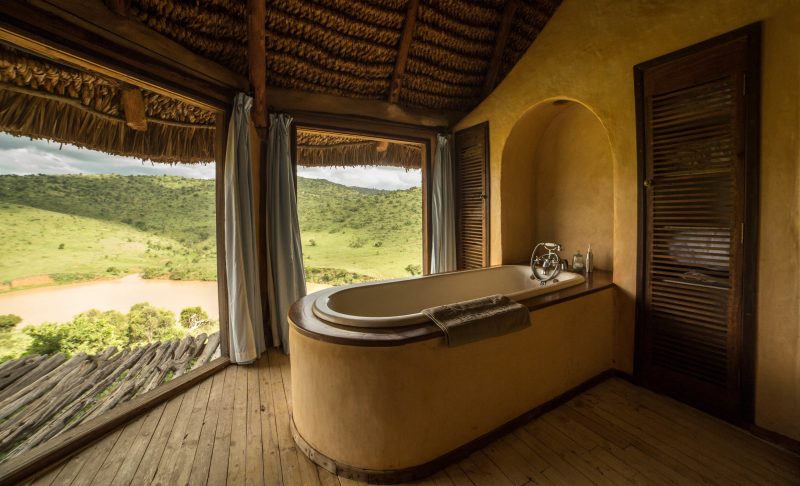
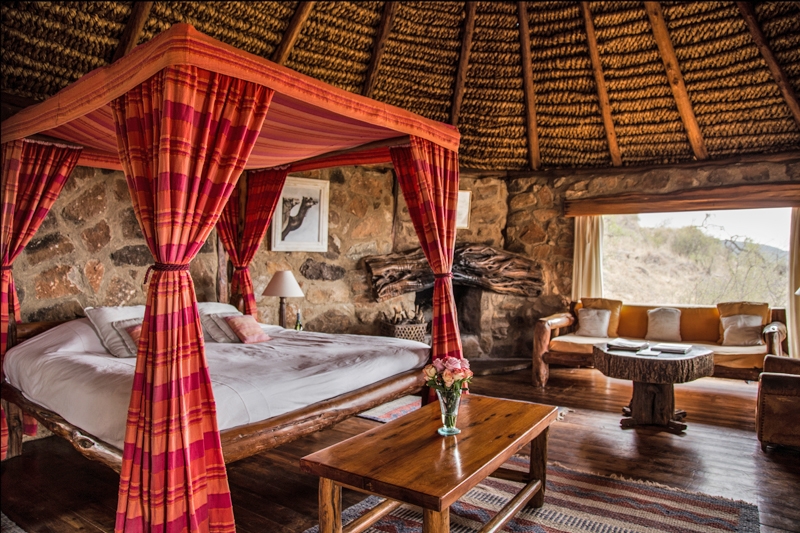
Previous
Next
Borana Lodge
I wince as I wade into the water which looked deceptively warm but I’m convinced is actually just below freezing point. I swim to the edge then look out onto hyena valley dam in the distance to see a large herd of elephants intent on elephant business. As if on cue, a waiter brings me fresh juice. To quote the very wise sir, Drake, ‘life is good’.
Built in 1993, the eco-lodge is constructed into a hillside, and you should naturally expect spectacular views. There are eight cottages built with rock and cedar, and thatched with makuti. Following delightful meals at the main lodge which has the bar dining and living rooms, I would heave up the hilly terrain back to our cottage. After late afternoons spent driving around in search of wildlife, we would come back to the comfort of a fireplace, hot tea and the smiles of the staff. Sometimes we sat on the terrace to enjoy the view, but mostly hung around the pool-with-a-view.
Other activities include guided bush walks, mountain biking in the wild, fishing, rock climbing and scenic flights. We also enjoyed being shown around Waitabit Farm, the largest permaculture project in East Africa, managed by the very passionate and innovative Llewellyn Dyer. A lot of the fresh food at the lodges are sourced from the farm.
Resident rates start at Ksh 20,000 per adult sharing on full board and include a range of activities. Inquiries via reservations@scckenya.com.
Our Top Experiences
SEEN SOMETHING YOU LIKE?
Enquire now and our team will create a custom itinerary tailored to your preferences.

CONTACT
enquiries@nomad.africa
Tel: +254 708 238 738
Purple Nomad Ltd
PO Box 69671 - 00400
Mwanzi Avenue, Nairobi, Kenya
